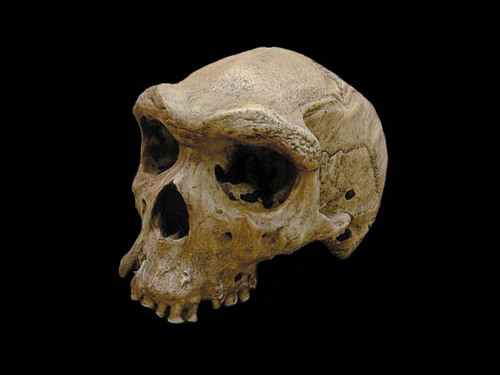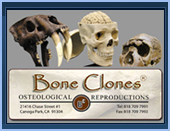일반명 : 호모 헤이델베르겐시스(로디지아인)
학 명 : Homo heidelbergensis (Rhodesian Man)
시 대 : 125,000 to possibly 400,000 YA.
발견지역 : Kabwe, Zambia
발견시기 : 1908
발견자 : K. Kimeu
발 표 : A. Woodward in 1921 in Nature as Rhodesian Man (H. rhodesiensis).
호모 헤이델베르겐시스 Homo heidelbergensis (하에델베르크인) 1908년 발견
125,000 to possibly 400,000 YA. The Homo heidelbergensis Skull Broken Hill 1 (Rhodesian Man) was discovered in
From Wikipedia
Homo heidelbergensis ("Heidelberg Man") is an extinct, potentially distinct species of the genus Homo which may be the direct ancestor of Homo neanderthalensis in Europe. According to the "Recent Out of Africa" theory, similar "Archaic Homo sapiens" found in Africa (ie. Homo sapiens idaltu), existing in
Homo heidelbergensis remains were found in Mauer near Heidelberg, Germany and then later in Arago, France and Petralona, Greece. The best evidence found for these hominins date between 400,000 and 500,000 years ago.
H. heidelbergensis stone tool technology was considerably close to that of the Acheulean tools used by Homo erectus. The first fossil discovery of this species was made on October 21, 1907 and came from Mauer where the workman Daniel Hartmann spotted a jaw in a sandpit. The jaw was in good condition except for the missing premolar teeth, which were eventually found near the jaw. The workman gave it to professor Otto Schoetensack from the University of Heidelberg, who identified and named the fossil.
Most current experts believe Rhodesian Man, found in
Morphology and interpretations
Both H. antecessor and H. heidelbergensis are likely descended from the morphologically very similar Homo ergaster from
Cut marks found on wild deer, elephants, rhinos and horses demonstrate that they were butchered, some of the animals weighed as much as 1,500 lb or possibly larger. During this era, now-extinct wild animals such as mammoths, European lions and Irish elk roamed the European continent.
In theory recent findings in Atapuerca also suggest that H. heidelbergensis may have been the first species of the Homo genus to bury their dead, but that is contested at this time. Some experts believe that H. heidelbergensis, like its descendant H. neanderthalensis acquired a primitive form of language. No forms of art or sophisticated artifacts other than stone tools have been uncovered, although red ochre, a mineral that can be used to create a red pigment which is useful as a paint, has been found at Terra Amata excavations in the south of France.
In 1994 British scientists had unearthed a lower hominin tibia bone just a few kilometres away from the English Channel including hundreds of ancient hand axes at the Boxgrove site. A partial leg bone is dated to 478,000 and 524,000 years old. Homo heidelbergensis was the early proto-human species that occupied both France and Great Britain at that time; both locales were connected by a landmass during that epoch. Prior to Gran Dolina, Boxgrove offered the earliest hominid occupants in
· Sauer, A. (1985). Erläuterungen zur Geol. Karte 1 : 25 000 Baden-Württ..
· Schoetensack, O. (1908). Der Unterkiefer des Homo heidelbergensis aus den Sanden von Mauer bei Heidelberg.
· Weinert, H. (1937). "Dem Unterkiefer von Mauer zur 30-jährigen Wiederkehr seiner Entdeckung". Z. f. Morphol. u. Anthropol XXXVII (1): pp. 102-113.










































 수량을 선택해주세요.
수량을 선택해주세요.





































